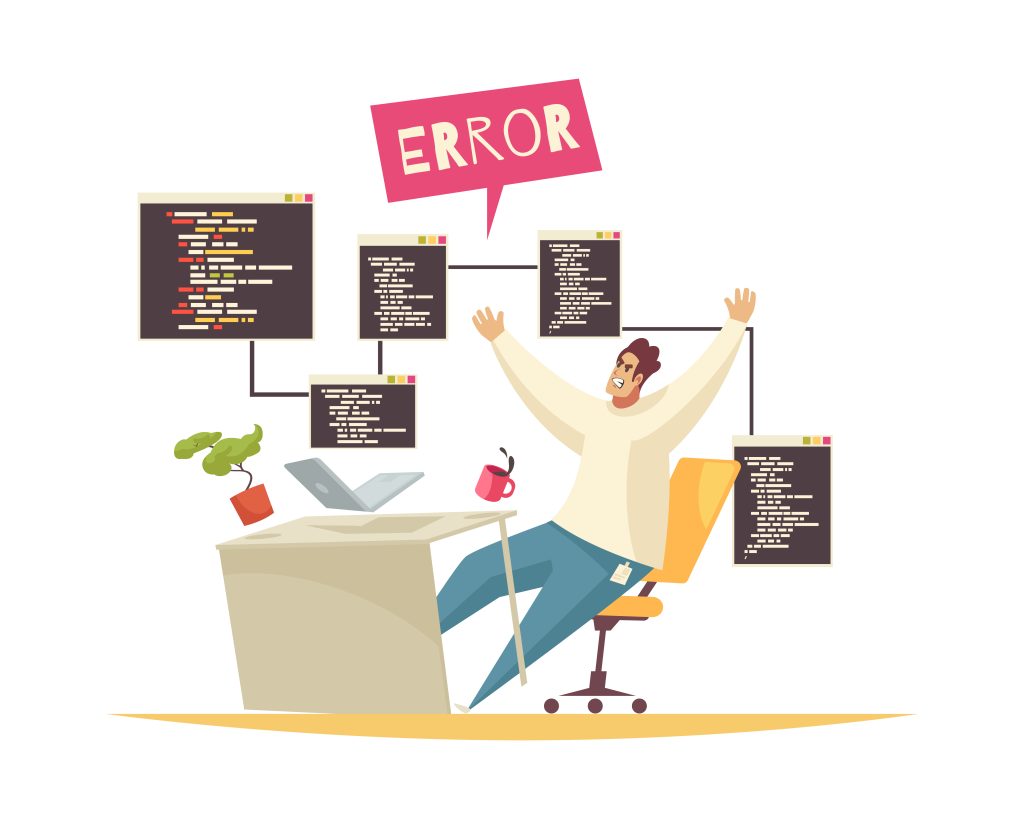The world of software development is quite dynamic. Every next minute, there are some innovative disruptions that lead enterprises to gravitate towards fast, cost-effective and time-saving solutions. While traditional coding approaches are robust and error-free, they are challenging in terms of cost, time, and complexity. Then what could be the solution to grapple with rising demands of the software market and expectations of innovation-craving users?
Developing custom business apps no longer rely merely on old-school coding methods. We have low-code, no-code and pro-code platforms to come to the rescue. You must be wondering how they can compete with time-honored technologies, and where to find a crossroads?
Well, these paradigms serve distinct features and act as guiding light as we navigate through the development’s future. This article will examine the intriguing field of low-code, no-code and pro-code software development, including their strengths, effects on different industries, and potential future of development. Without further ado, let’s dive in!
Beginning of Low-Code
The low-code concept started in the early 2000s when Microsoft first ever launched its .NET framework. The .NET framework offered developers a simplified version of the application development process with pre-built components and drag-and-drop tools. Ever since its inception, low code has gained a lot of traction and showed itself as a promising tool for software development.
Low-code gives businesses the tools they need to meet the demand for software solutions and empowering them in the process. Low-code platforms are revolutionizing the tech sector by facilitating software development for a wider audience without requiring technical or coding expertise. This has led to an unparalleled surge in their use in recent years. By 2025, it is expected that 70% of new apps would use low-code or no-code technologies, up from less than 25% in 2020.
All Knowledge: Low-Code vs. No-Code vs. Pro-Code
In the following paragraphs, we’ll explain low-code, no-code and pro-code frameworks, their differences and transformative power in the software development realm and how the approach shifted from low-code to no-code and then pro-code.
Let’s make it clear first: Low-code is not equal to no-code, rather somewhat similar. And pro-code is a different ballgame. These words are pretty self-explanatory, right? But we’ll walk you through an in-depth exploration.

Understanding Low-Code Development Approach
Low-code No-code (commonly known as LCNC) involves a different pathway to develop apps other than using traditional programming languages. They are commonly referred to as LCNC, because they overlap in some cases. But, they accommodate many situations and needs. While no-code gives a code-free solution for simpler jobs, low-code offers a balanced approach that combines the strength of coding with the convenience of visual development. The selection amongst them is contingent upon the specifications of the project, the target user base, and the required degree of customization or extension.
The goal of low code development is to design apps with as little manual coding as possible while emphasizing visual, drag-and-drop interfaces and code snippets. Low-code framework leverages 60% of the pre-built components, facilitating developers to create custom apps without starting from the ground up.
By providing developers with a visual environment, low-code enables them to automate every stage of development. It makes the application development process fast, cost-effective and easy to access.
Understanding No-Code Development Platform
Citizen developers, sometimes known as business technologists, can easily design apps without knowing how to code. Reusable components can be dropped and dragged, connected, and apps can be created by citizen developers without a hassle.
Citizen developers are empowered by a no-code approach. No-code platforms are designed to make it easier for non-programmers to construct applications without any code at all. They are frequently used to replace or even improve spreadsheet-based solutions. They are also applied to basic web pages. Business users who need same-day development cycles will find it more suitable to use.
Business customers can now create feature-rich apps using just drag-and-drop tools. 90% of pre-built frameworks are available in no-code platforms.
Understanding Pro-Code Development
Pro-code is the other name for traditional software development. In this approach, professional developers with sheer expertise in programming develop complex apps. They use conventional frameworks and programming languages to develop custom apps for cross-enterprise processes.
Pro-code development is the most effective method for creating distinctive, reliable, and intricate systems that must be precisely customized to meet needs. It offers full coding, full control and full customizability – all at the full cost? Certainly! Furthermore, it takes a lot of time, is complicated, and calls for the knowledge of experienced software developers.
Key Advantages of Low-Code & No-Code Software Development
Undoubtedly, low-code and no-code platforms seem versatile with respect to their features. It is not wrong to state that they will have a significant role in transforming the future of development. Let’s delve into the key advantages of LCNC platforms and get to know the hype behind these cutting-edge development methodologies.
1. Enhanced Flexibility & Agility
While low-code platforms integrate simplified highlights for ease, they are more adaptable than no-code instruments. Proficient developers can fundamentally upgrade usefulness by making augmentations to the visual language, which brings about more extravagant applications more custom-made to explicit requirements.Changes and updates can be carried out quickly, advancing deft improvement rehearses.
2. Faster Time-to-Market
Low-code and no-code advancement is vital to assisting associations with building applications at scale. With 60-90 percent pre-assembled components and visually simplified editors, building business applications becomes simpler and speedier, prompting quicker time to market. Low code platforms enable developers to rapidly make applications, speeding up the advancement lifecycle.

3. Empowerment for Non-Technical Users
Low-code platforms frequently include visual points of interaction that are more available to non-developers, encouraging cooperation across various groups. Low-code engages representatives to make the important arrangements utilizing IT-endorsed stages rather than unapproved third-party tools, making it simple for non-specialized people.
4. Cost-Effective Approach
With less manual coding included, development costs are decreased, making it an alluring choice for organizations with financial plan imperatives. This speed up advancement cycle saves time as well as lessens costs altogether as it requires less assets. By smoothing out the application development process, companies can apportion assets all the more proficiently. Along these lines, low-code has been a critical answer for rejuvenating application thoughts and developments with a restricted financial plan and time limitations.
5. Compliance & Integration
Business users can assume control over application improvement, minimizing the load on IT offices. Generative computer based intelligence is gradually and consistently assuming a bigger part in programming improvement. At the point when implanted in low-code stages, artificial intelligence can assist with utilizing its full capacities. One of its most critical advantages is its ability to overcome any barrier between no-code and low-code.

Shortcomings of Low-Code & No-Code Software Development
1. Customization Constraints
While appropriate for some applications, low-code platforms might confront difficulties in obliging profoundly complicated or concentrated prerequisites. Versatility Concerns:
Some low-code solutions might battle to scale productively, especially while taking care of countless clients or complex cycles.
2. Vendor Lock-In
Businesses employing no-code and low-code platforms run the risk of becoming overly reliant on the platform suppliers. Because of this dependence, there may be risks associated with vendor lock-in, which makes it challenging to migrate apps or move platforms.
3. Limited Complexity
No-code platforms might battle while managing complex or multifaceted business processes. This can be a huge barrier for organizations which require tailored apps with desired features and extensive complexity. If your organization deals with complex apps and cross-enterprise integrations, low-code, no-code may not be the right approach for you.
4. Potential for Shadow IT
Without legitimate administration, low-code and no-code development could prompt the development outside the domain of IT divisions, possibly presenting security and consistency concerns.
The Future of Enterprise Applications: Embracing Low-code and No-code Platforms
The potential of low-code/no-code platforms is definitely linked to the future of software development. We may anticipate the following tendencies to influence the landscape as these platforms continue to evolve:
1. Integration of AI & Automation
Artificial intelligence (AI) capabilities will be progressively incorporated into low-code and no-code platforms in order to automate activities, provide intelligent recommendations, and improve the development experience. Natural language processing and machine learning, two AI-powered capabilities, will enable users to create even more complex apps without requiring much technical knowledge.
To further boost productivity and efficiency, these intelligent platforms will help developers by automating repetitive processes, producing code snippets, and suggesting ideal design patterns.
2. Easier Collaboration Between Developers & Stakeholders
There is now a thriving community of developers, citizen developers, and enthusiasts thanks to the emergence of low-code and no-code platforms. Marketplaces, forums, and collaboration platforms devoted to these technologies are thriving. This cooperative ecosystem will promote information sharing, make idea sharing easier, and open up new software development opportunities. To promote innovation and speed growth, developers can take advantage of community-driven libraries, templates, and best practices.

3. Hybrid Development Environments
Many businesses are moving towards hybrid and multi-cloud setups because of their flexibility, scalability, and resilience. Platforms for low-code and no-code software development will advance to enable the smooth deployment and integration of applications across various cloud service providers and on-premises infrastructure.
Using pre-built connectors and visual interfaces, developers can link and orchestrate services across various cloud environments, making the development of complicated applications easier.
Continuous Integration / Continuous Deployment (CI/CD)
Secure, fast and reliable deployments are the objectives of low-code/no-code platforms. Software development and deployment can only be done efficiently with the use of continuous integration and delivery (CI/CD) techniques. Not a code CI/CD concepts will be embraced by low-code software development platforms, enabling developers to automate build, test, and deployment procedures. These platforms will facilitate smooth collaboration, version control, and quick application deployment by utilizing cloud-based infrastructure and connecting with version control systems. This more efficient CI/CD methodology will lead to quicker time-to-market, shorter development cycles, and higher-quality software.
In A Nutshell
The field of software development is changing significantly as low code and no code development continue to gain popularity. They are significantly gaining a lot of attention from developers and non-coders alike due to their ease of use, cost-effectiveness and robust nature. The process of democratizing development enables organizations to leverage the combined creativity of their staff, hence promoting innovation across all domains. But it’s imperative that you approach these development platforms knowing exactly what their advantages and disadvantages are, as well as the specific set of requirements of your company.
Future low-code and no-code platforms are likely to be much more advanced, solving existing problems and expanding the realm of what is possible without a lot of writing. Better integration capabilities, strong security measures, and more smooth cooperation between professional developers and citizen developers are probably going to come along with this evolution.
Along the same lines, while low-code and no-code approaches take center stage in software development, they are not a panacea. In addition to empowering individuals and developers to create applications, offering cost-effectiveness, agility, and enhanced flexibility, they offer a fair share of shortcomings as well.
We anticipate that the synergy of citizen developers, professional developers, and these cutting-edge approaches will propel software development into the future and create a digital environment that is more creative, responsive, and agile.
Stackup Solution’s Services
Software development landscape is changing due to the low-code revolution, which is a result of the rapid advancement of technology. Because of everything said above, low-code is an effective tool for businesses in a number of industries. However, even if low-code is a tool for IT and business alike, working with a knowledgeable services delivery partner can still greatly improve your low-code development process.
Stackup Solutions offers an extensive range of customized low-code solutions, leveraging multifaceted sources from microservices, data integration, server-side and client-side support. We have a team of professionals who can unlock the full potential of low-code and no-code development for your enterprise. Get started with Stackup Solutions TODAY!


.jpeg)

